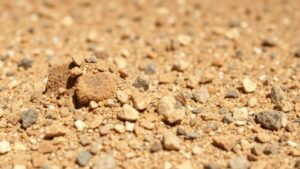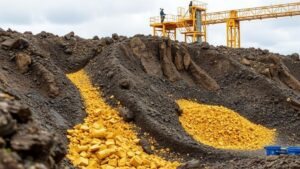Identifying and Recovering Flour Gold in Heavy Black Sand Layers
Identifying and Recovering Flour Gold in Heavy Black Sand Layers
Flour gold, also known as fine gold, refers to gold particles that are typically smaller than 200 mesh, or approximately 0.074 mm in diameter. Recovering this elusive form of gold from heavy black sand layers poses unique challenges for prospectors and miners alike. Understanding the characteristics of black sand and implementing effective recovery methods are essential for maximizing yield and efficiency.
Understanding Heavy Black Sand Layers
Heavy black sand layers are commonly found in riverbeds, creek beds, and along coastlines. e layers are often rich in important mineral constituents such as magnetite and other iron oxides. This composition makes them denser than surrounding materials, which contributes to their accumulation in certain areas. The presence of heavy black sand often indicates the proximity of flour gold, but also complicates the recovery process due to its weight and magnetic properties.
Characteristics of Flour Gold
Flour gold is typically found mixed with other mineral particles, including black sand. Due to its fine size, flour gold can be difficult to detect and separate. Its characteristics include:
- Size: Flour gold particles are small, often require specialized equipment for recovery.
- Appearance: They appear dull and may not have the luster of larger nuggets.
- Weight: Despite being lightweight, flour gold is denser than most materials present in black sand.
Techniques for Identifying Flour Gold
Identifying flour gold amid heavy black sand requires careful methods. Examples of effective techniques include:
- Panning: Traditional gold panning techniques can sometimes reveal flour gold. By using a pan and stratifying the materials, the lighter sand can be washed away, leaving behind heavier minerals, including flour gold.
- Microscopic Assessment: The use of microscopes can help identify the distinct characteristics of flour gold particles among black sand.
- Magnetic Separation: Utilizing magnets can aid in removing magnetic minerals from black sand, allowing for better visibility of potential gold particles.
Recovery Techniques for Flour Gold
Recovering flour gold from heavy black sand layers requires specific methodologies. Here are some effective recovery techniques:
- Dry Washing: In arid regions, dry washers can be efficient, utilizing air to separate lighter materials from heavier gold particles.
- sluicing: A sluice box can be employed to capture gold particles as water flows through the lightweight materials, trapping heavier particles in riffles.
- Centrifugal Concentrators: These machines use gravitational forces to separate fine gold from lighter materials, improving recovery rates significantly.
Challenges of Recovering Flour Gold
Despite technological advancements, recovering flour gold is fraught with challenges:
- Environmental Considerations: The methods used must comply with local regulations, especially in sensitive areas.
- Efficiency: High recovery efficiency must be balanced against operational costs.
- Equipment Limitations: Not all equipment is designed for recovering fine gold, emphasizing the need for specialized tools.
Case Studies: Successful Recovery Operations
There are numerous examples of successful operations recovering flour gold from heavy black sands. One notable case is from the North Fork of the American River in California, where miners employed advanced sluicing techniques. paired traditional panning with modern equipment, increasing their recovery rates by over 30% compared to traditional mining methods.
Another case study involved a commercial operation in Alaska, where a combination of magnetic separation and centrifugal concentrators resulted in the recovery of significant quantities of flour gold previously deemed unrecoverable due to its fineness.
Actionable Takeaways
For hobbyists and commercial miners alike, effectively recovering flour gold from heavy black sand requires a multi-faceted approach:
- Invest in specialized equipment designed for fine gold recovery.
- Use traditional methods like panning in tandem with modern techniques for optimal results.
- Stay informed about local environmental regulations to ensure compliance during recovery operations.
By understanding the properties and recovery techniques related to flour gold in heavy black sand, individuals can enhance their prospecting strategies, ultimately leading to more successful gold recovery endeavors.



